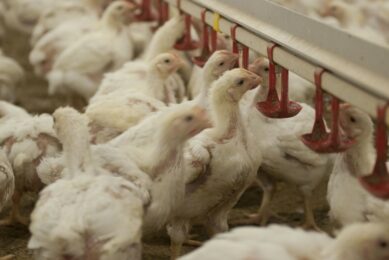Gas burner helps in the battle against poultry disease

Manual labour has traditionally been employed for the thorough terminal cleaning and disinfection of poultry buildings, but two enterprising cleaning contractors in north-east England have developed a dry system for disinfection.
Next to their their specially adapted vineyard sprayer for wet cleaning and disinfecting poultry houses they operate a purpose-built gas burner, used on floors to tackle infective organisms such as coccidia.
Mr Scott runs Agriwash UK and Mr Appleyard has a team of around 40 staff working in several collaborative projects, and have a range of poultry producer clients.
The gas burner designed by Scott and Appleyard is 1.8m wide, with the frame rear-mounted on three-point linkage, attached to a 25 horse power Kubota tractor.
As well as the row of burning nozzles, it also carries its own wash and disinfection system, which gives the exterior a thorough cleaning between houses.
Each gas burning machine carries either two or four gas tanks. This multiple bottle design allows the machine to source gas flow from all the tanks at the same time, which prevents the pipe work from freezing up during the winter.
The two-bottle gas burner version can cover 20,000sq m, before it has to be refilled.
No pollution
The pair claim that the equipment is effective against a range of disease-causing organisms, including bacteria such as E coli, yeast and moulds. Other benefits include no run-off, which eliminates the risk of possible watercourse pollution.
The system, which has been adopted by virtually all their poultry producer customers, is priced to compete with chemical treatment, says Scott.
It has been designed with help from gas supplier Calor. Despite the equipment having the ability to raise the ambient temperature in the house to up to 22ºC, Scott assures producers that it will not cause any damage to concrete.
“Gas burning was popular 20 years ago, but its use gradually declined, as new chemical liquids became available. Now it has gone full circle, and we think it will grow in popularity in the future,” he says.
“A number of effective disinfectants have already been withdrawn, because of health and safety issues. Looking ahead, it is possible that gas may end up being the only option.”
Source: Farmers Weekly













